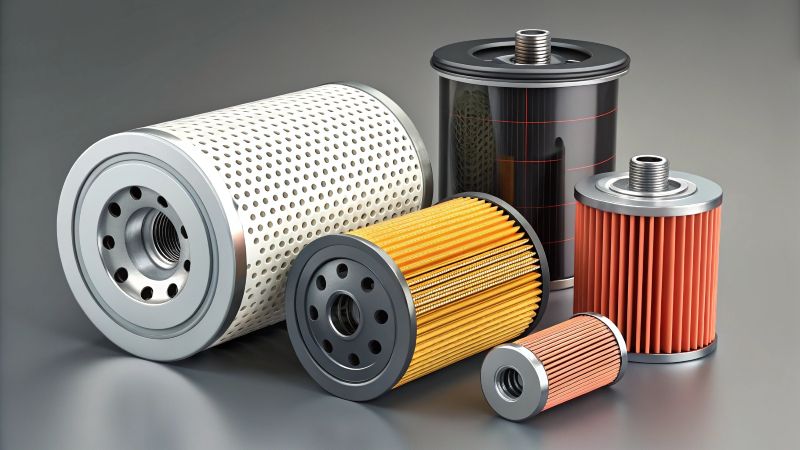
Defining Temperature-Resistant Adhesives
Types of Filter Adhesives
Importance in Filtration Systems
Methods of Adhesive Testing
Latest Trends in Adhesive Technology
Strategies for Adhesive Selection
Future of Temperature-Resistant Adhesives
Frequently Asked Questions (FAQ)
Temperature-resistant adhesives are essential in advanced filtration systems, as they are designed to maintain bond integrity under fluctuating or extreme thermal conditions. These adhesives are formulated with specialized chemical structures that endure thermal expansion and contraction without losing performance. Such characteristics enhance the durability and reliability of filters used in environments that face constant or intense temperature variations. By preserving adhesive strength in demanding applications, these materials ensure that filters continue functioning effectively and safely.
Filter adhesives are engineered to handle both mechanical and thermal stress. Common types include:
Epoxy adhesives, valued for their high thermal stability and mechanical strength
Polyurethane adhesives, offering flexibility and impact resistance
Silicone adhesives, known for their elasticity and resilience under high temperatures
Each type is selected based on the specific demands of the filter system, such as temperature range, vibration exposure, and substrate compatibility. Choosing the appropriate adhesive type helps ensure long-term filter performance even in harsh operating environments.
In filtration systems, the reliability of adhesive bonds directly affects system safety and output quality. Temperature-resistant adhesives prevent failures like leakage, separation, or contamination that can result from thermal cycling. Industries such as pharmaceuticals, food processing, and chemical manufacturing depend on consistent filtration outcomes. High-performance adhesives maintain structure and seal integrity even as environmental temperatures fluctuate, thereby ensuring continuous and contaminant-free operations.
To validate the suitability of temperature-resistant adhesives, various performance tests are conducted, including:
Thermal cycling tests, simulating repeated heating and cooling
Shear strength tests, measuring resistance to mechanical stress
Peel and tensile tests, assessing flexibility and durability
These tests provide insight into how an adhesive performs under stress and across a filter’s expected temperature range. By verifying thermal and mechanical stability, manufacturers ensure that selected adhesives contribute to reliable and long-lasting filtration performance.
The field of adhesive technology is evolving rapidly, especially for applications requiring thermal resistance. Emerging innovations include:
Nanomaterial-enhanced formulations, which improve thermal conductivity and bonding strength
Hybrid polymer systems, combining multiple adhesive properties for greater versatility
Sustainable and eco-friendly options, designed to reduce environmental impact without sacrificing performance
These developments allow for more robust adhesives that can handle complex operational conditions across a wide range of industries.
Selecting the best adhesive for temperature-resistant filters involves a strategic evaluation of:
Thermal range: Ensure the adhesive tolerates the full spectrum of operating temperatures
Mechanical load: Consider vibration, pressure, and movement within the system
Material compatibility: Prevent chemical degradation between the adhesive and filter materials
Processing needs: Take into account curing speed, application method, and manufacturing conditions
By aligning adhesive characteristics with system requirements, manufacturers can enhance filter effectiveness and durability.
Ongoing research in materials science is paving the way for the next generation of temperature-resistant adhesives. Future solutions will likely feature:
Greater resilience under extreme temperatures
Improved mechanical strength with reduced weight
Integration with smart monitoring technologies
These advances will increase the lifespan of filtration systems and expand the range of applications across high-stress sectors. As industrial demands grow, these adhesives will play an even more critical role in ensuring efficiency, safety, and operational continuity.
Q1. What are temperature-resistant adhesives?
They are adhesives formulated to maintain strong bonds despite exposure to extreme or fluctuating temperatures, making them essential in many industrial applications.
Q2. Why are these adhesives important in filtration systems?
They prevent bond failures that could lead to leaks or contamination, ensuring stable operation in high-temperature environments.
Q3. What types of adhesives are commonly used in filters?
Typical types include epoxy (for strength), polyurethane (for flexibility), and silicone (for thermal elasticity).
Q4. How are these adhesives tested for reliability?
They undergo tests such as thermal cycling, shear strength analysis, and peel/tensile testing to assess performance under real-world conditions.
Q5. What are the latest advancements in adhesive tech?
Trends include nanomaterial-infused and hybrid polymer adhesives, offering superior thermal and mechanical performance, along with sustainable alternatives.
Q6. What factors are critical for adhesive selection?
Consider the thermal range, mechanical stress, material compatibility, and ease of application during the manufacturing process.
Q7. What is the outlook for this type of adhesive?
Future developments will offer higher thermal tolerance, extended durability, and integration with smart technologies to support evolving industrial demands.
Q8. Can you give examples of such adhesives?
While specific brands are excluded here, many industrial-grade adhesives are available that combine thermal resistance, mechanical strength, and flexibility tailored for filtration systems.